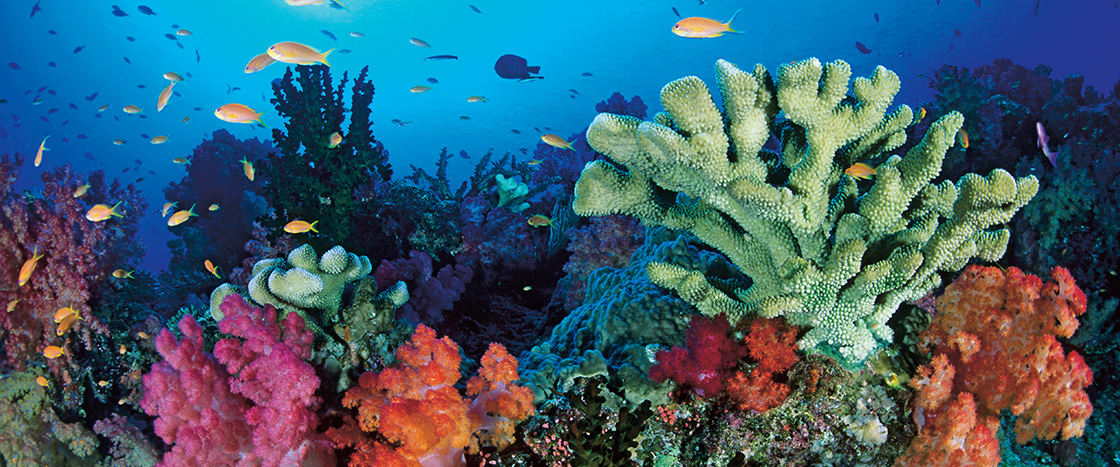Jim McMahon/MapMan®
The key to saving corals from dying out might be inside a warehouse in Queensland, Australia. The outside looks ordinary. But inside is a nursery full of tanks containing baby corals! Each tank holds 132 gallons (500 liters) of water, plus hundreds of thousands of coral eggs, each one smaller than the head of a pin.
A group called the Reef Restoration and Adaptation Project (RRAP) cares for these tiny animals. In the wild, corals live in clusters of millions, forming coral reefs. Their hard outer skeletons provide homes for ocean animals. But warming ocean temperatures can stress and kill corals. RRAP hopes to change this by breeding corals that can better survive. Once the babies are adults, workers will place them in key locations in the Great Barrier Reef in Australia to help rebuild it.
Initially, monitoring the corals was a lot of work. Scientists checked each tank every hour—even late at night. They would count corals under a microscope to track their growth. But that work has become much easier thanks to an invention by roboticist Dorian Tsai and his team. They designed special robots that can do the job faster. Tsai recently spoke with SuperSTEM about his work and about saving coral reefs.
What’s the key to saving corals from dying out? It might be inside a warehouse in Queensland, Australia. The outside looks normal. But the inside is full of tanks. They contain baby corals! Each tank holds 132 gallons (500 liters) of water. Plus, there’s hundreds of thousands of coral eggs. Each one is smaller than the head of a pin.
A group cares for these tiny animals. It’s called the Reef Restoration and Adaptation Project (RRAP). Corals live in clusters of millions in the wild. Their hard outer skeletons form coral reefs. Reefs provide homes for ocean animals. But oceans are warming. That can stress and kill corals. RRAP hopes to change this. It’s growing corals that can better survive. The babies become adults. Then workers place them in the ocean. They go to key locations in Australia’s Great Barrier Reef. That could help rebuild it.
Caring for the corals was a lot of work at first. Scientists checked each tank every hour. They did this even late at night. They would count corals under a microscope. This allowed them to track their growth. But that work is now much easier. That’s thanks to a new invention. It was created by roboticist Dorian Tsai and his team. They designed special robots that can count corals faster. Tsai recently spoke with SuperSTEM about his work and saving coral reefs.

